Why is Minecraft Still Popular?
Everyone knows of it, and everyone seems to have played it. Minecraft has been in the gaming world since before it’s official release, since 2009. The game’s official release was on November 18th, 2011. Minecraft has been in the mainstream media for a while, and during its peak was virtually everywhere. Eventually, the game lost a bit of that popular culture power, yet it has remained as a mainstay of the gaming industry, even having a significant resurgence during the quarantine of 2020.
Why is it that Minecraft has stayed so popular? Why does Minecraft seem to only have grown more and more, instead of slowly dying off in favor of a shiny new franchise or a sparkly new game? Well, the answer lies not only in the game itself, but the community that built itself around it.
Minecraft Origins
Minecraft originally was released to the public in 2009 by Notch, the original creator of the legendary video game. It definitely wasn’t what we are able to play today. The early stages of Minecraft’s development had various names. These names, in order, are ‘pre-classic’, ‘classic’, ‘indev’, ‘infdev’, ‘alpha’, ‘beta’, and then when it was released officially, ‘Java Edition’. The first versions to be made playable were during the ‘classic’ stage of development.
The ‘classic’ stage introduced foundational building blocks, in both a figurative and literal sense, like trees, logs, sand, gravel, bedrock, water, lava, and terrain (hills and lakes). Minecraft’s game modes, survival and creative, were also first tested during this stage.
The ‘indev’ and ‘infdev’ stages introduced other important features such as inventory, crafting, farming, day and night cycles, infinite terrain generation and water physics. Indev ‘stood’ for ‘ in development’, while ‘infdev’ stood for ‘infinite development’.
The last two development stages for the game, ‘alpha’ and ‘beta’ finished polishing up and adding features of the game before it’s official release in November, 2011. The Alpha stage added the Nether, a realm that resembles biblical hell. It added many other features, some of those being redstone circuits, cows, chickens, the ability to sneak, and boats.
‘Beta’ stage added the full creative mode, came with a new launcher, tameable wolves, maps, beds, endermen, and the hunger mechanic, as well as many other features, mainly of the quality of life type. These last two stages set the final stretch of what Minecraft was going to look like for its’ foreseeable future.
Minecraft’s Rise
Throughout these stages, the game gained more and more popularity. It’s simple easy-to-grasp nature, combined with the game’s ability to become very complex in addition to its low system requirements, made Minecraft a surefire hit in the broad gaming community.
Multiplayer servers allow you to play with a large number of people. These servers provided a world for permanent structures to be created and for the aforementioned communities to flourish. They further amplified the game’s popularity, allowing groups of friends to have fun in a virtual world. It also led to content creator groups that resonated with many players.
Content Creators on the internet, like on the at-then-blowing-up YouTube platform, catapulted Minecraft to the front of stage and then quickly onto the mainstream. They used the game to play with groups of friends, many of which now boast massive audiences. The game was a massive hit with the ever-online and internet savvy youth.
When Minecraft finally reached the general audience, there was nothing to be scared about. Video games have always been known to be mostly violent, at least in most people’s minds back then. Notoriously graphic games such as Grand Theft Auto and Call of Duty routinely made the news for topping their previous attempt at gratuitous violence. Parents were warned to always check what their child was playing, and to always check the game’s ESRB rating. Unlike these dark pieces of media, Minecraft was a bright contrast. It was just like lego, family friendly.
No gore, No graphic scenes, and nothing suggestive. A perfectly safe game that any demographic could play at any time anywhere. The thing this time was, it was unique and genuinely good.
Minecraft Hits the Mainstream
Minecraft’s exploding popularity allowed it to keep expanding. Notch, created a small video game company, Mojang, in order to manage his creation’s expansion better. The game kept becoming more and more popular, supported by a massive community that found itself on every corner of the internet. The conversation quickly lept to real life. Kids in school spread the game through word of mouth as well. They talked about their favorite mods or the time’s popular YouTuber. Soon enough, even your grandpa knew what Minecraft was.
Many editions of Minecraft were released, as a statement to its popularity. The Pocket Edition was released for mobile devices in waves, in August, October, and November of 2011. The first Xbox 360 version was released in May of 2012. The PlayStation 3 version was released in December of 2013. The PlayStation 4 version was released in September of 2014. The Wii-U version and the Education Edition, meant for schools, was released in 2016. A Nintendo switch edition was released in 2017. In the same year, it was also released for the 3DS and 2DS. As you could probably tell, the demand was enough for these versions to be developed.
Minecraft: Not Just A ‘Kid’s” Game
Minecraft, as simple and bright as it is, can become really complex. Like lego, which it shares many resemblances of, it can quickly become more than the sum of its parts. Examples of this complexity lie in the code of Minecraft being easily modified, on top of actual user game-modification (mods) development support provided by Mojang.
The at-then-newly-bustling community created mods and this further cemented minecraft’s long lasting legacy. Some mods were simple, serving as a tool to increase game performance, or degree-level complex, such as Tinker’s Construct. It adds a large amount of tools, while also providing in-game ways to create them as well. There are hundreds of possible combinations. Another one, ComputerCraft, adds computer consoles that allow you to program through redstone switching systems.
The code of the game is built in Java, on the PC version of the game. Java is a language many beginners use to learn their way around programming. Many beginner programmers use this to practice coding, often creating elaborate mods for the wider user base to enjoy. Both entities benefit. The coder gains valuable language experience and the player gains neat tools that change how Minecraft plays. A group of four such coders, who developed Bukkit, a community server implementation, were actually hired by Mojang.
Mojang’s approach to user-created modifications on their own intellectual property, was based on providing an easy way to do so. Unlike other companies, Mojang has not pursued lawsuits against mod creators. Back in 2012, Markus Persson, said that mods were "a huge reason of what Minecraft is". In 2016, Mojang actually officially acknowledged mods, and called them “add-ons” on the “Bedrock Edition” of the game.
Minecraft’s Unlikely Resurgence
Covid-19 impacted the world in an unprecedented way. It’s impacts are still being felt today, even with our current knowledge and vaccines against the virus. In 2020, during the nation’s quarantine, people were stuck inside with nothing to do. They also had the internet, and computers that, at this point, were most likely able to run the game. A recipe for a Minecraft explosion. The existing user base swelled to an astonishing 130 million people playing, every month of 2020.
At this point in the game’s life cycle, it had matured. It was ready to handle a large uptick in the user base. Friends, unable to connect in real life, connected online. Hypixel, a server that hosted hubs of games and activities you could do with your friends, had, at one point, over 180,000 concurrent players. Custom servers allowed players to play an assortment of minigames.
One such minigame, that also had a hand in popularizing Minecraft, is Hunger Games. Named after the popular book, it was and is a proto-battle royale. Another one, Skyblock, has the player start on a small air-suspended piece of land. They get a lava bucket, water bucket, and a tree in order to become a self-sustained island. If a player fell off their Skyblock, they would fall into the void, die, and lose all of their items.
These minigames kept the game fresh, and made sure there was always something to do with your friends. Even if you did not want to play in a survival or creative world, fun minigames, often with leaderboards, could keep you plenty occupied.
A large contributor to the game’s resurgence in popular media was it’s content creators, such as Dream. This creator was responsible for Dream SMP (survival multiplayer), whose various inhabitants also were popular in their own right. Dream SMP was responsible for over 200 billion video views during 2020.
Many of the creators’ exploits hit the front page of many social media websites, such as Twitter and Reddit. One controversy, purported by Dream, broke barriers and even got higher academia involved. This controversy was based on the fact that Dream cheated on a ‘speedrun’ of Minecraft, and then created false evidence to back that run. A two-month investigation was launched by the speedrun.com team, and they found almost irrefutable evidence of the cheating, based on statistical odds.
While at first Dream fought for his innocence, he later admitted to using a disallowed modification, on grounds that he was unaware. This was a big deal in the Minecraft world, as Dream was the biggest Minecraft youtuber and speedruns are an integral part of the community. The video of the speedrun.com team currently stands at 4.2 million views.
Minecraft was never as popular as it was during 2020. The revenue from sales of the game throughout the year stood at 415 million dollars. That is the second highest revenue of any year of the game’s launch. Minecraft’s community, yet again, was responsible for drawing others into their virtual hobby.
The Takeaway
Not following in other video game companies’ footsteps, Mojang and Microsoft have been a key driver in Minecraft’s continued success. Instead of slowly splitting the player base through paid DLCs, or shady practices that target dedicated players that are trying to make your game better and fun to play, they leaned into it. Players who developed a custom server API became a part of Mojang. Mods are not only tolerated but actually encouraged. Both organizations understood that without supporting those who actually put time into their game, they would not be able to thrive the way they are in the present day.
Minecraft has been a gaming staple for what feels like forever. A healthy developer-player relationship, and a vibrant cult community have carried the game to its full potential. Even with it’s long presence in popular culture, boredom seems unable to get a grasp of it. It’s resurgence in 2020 has been historic, and has made sure that it will still be well liked in the upcoming future to new generations
Simple gameplay mechanics that anyone can learn, combined with its’ children friendly presentation and ability to be modified, had Minecraft became what it is today, a true titan, and an example how to do video game development right.
images cr: Mojang, u/mrbobbytheguy1, PrestonPlayz, PR Newswire, Matt Doyle
10 Years Today In Gaming: Take A Look at Classic Releases from 2012
BETHESDA's NEW IP 'STARFIELD': Why we SHOULD be WORRIED!

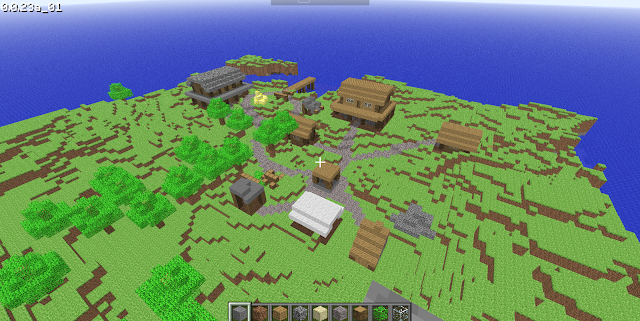
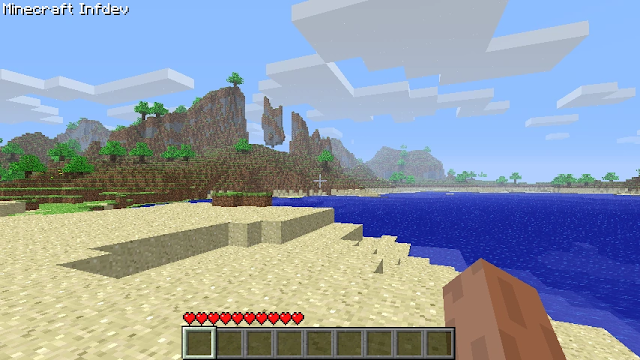






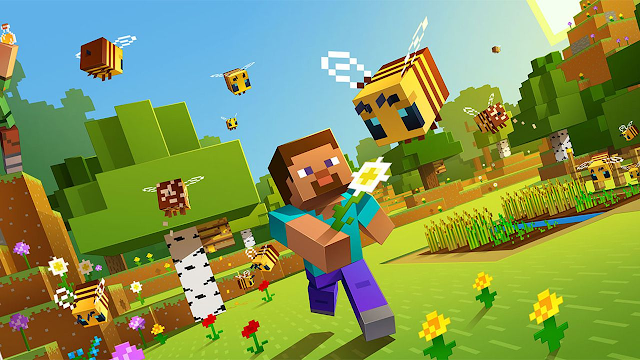


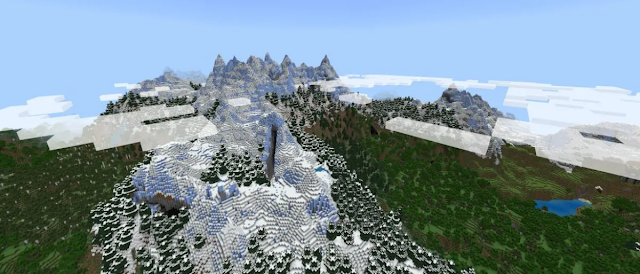
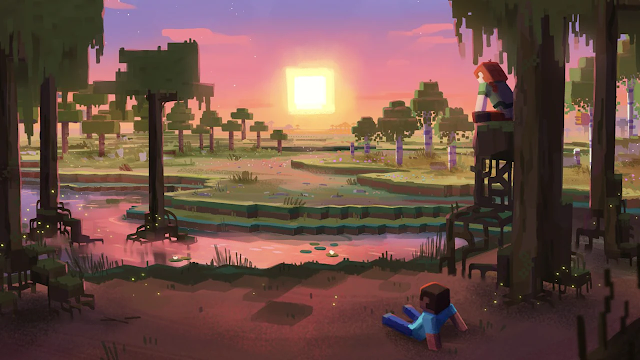




To play the premium version, get it from this store.
ReplyDelete